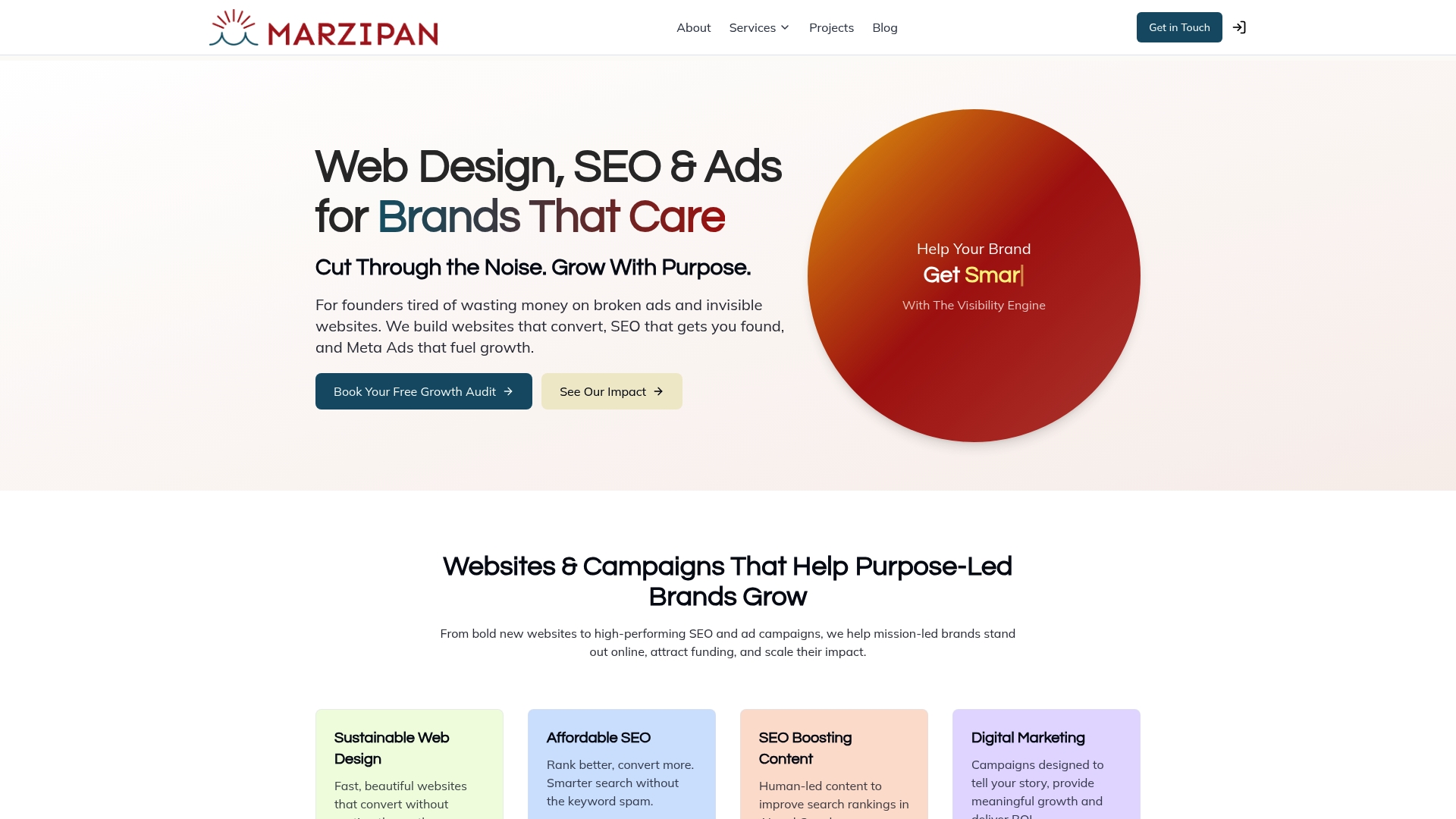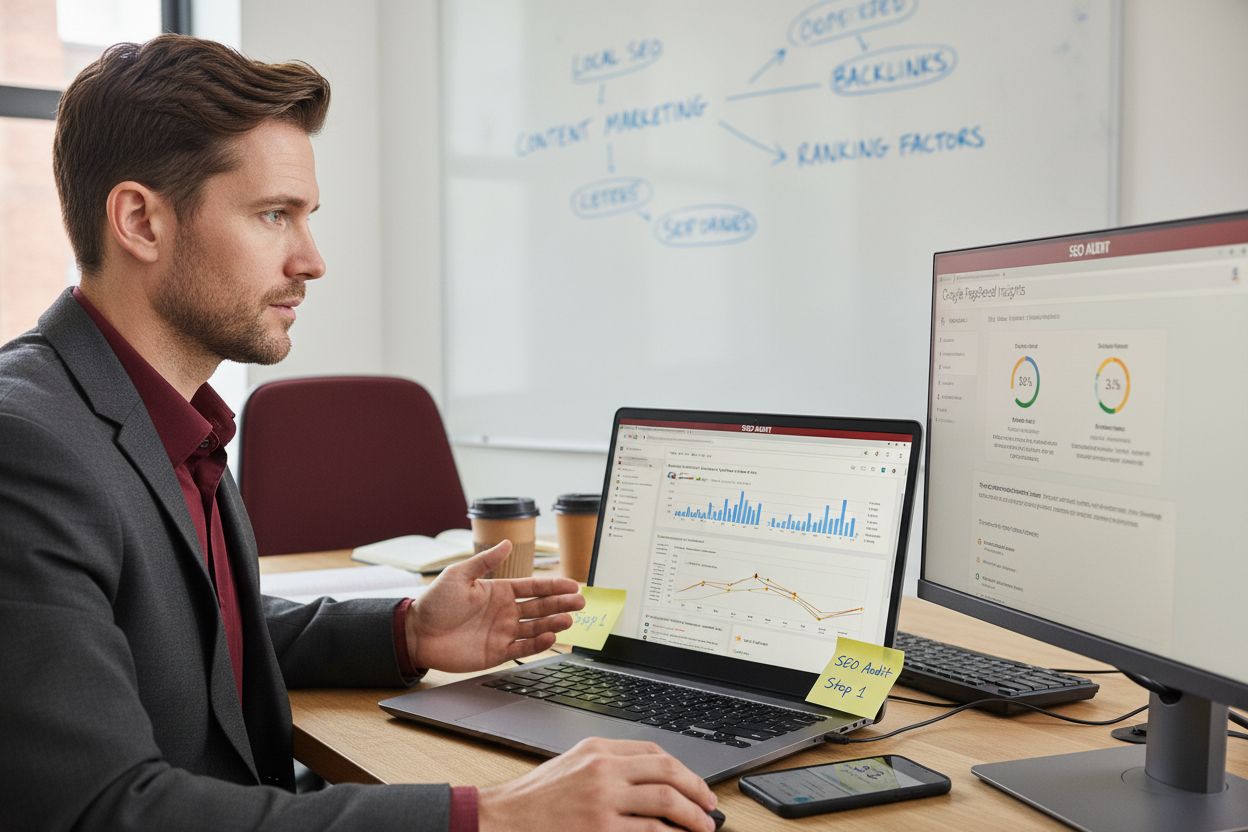How to Make a Website for a Business in Sydney
More than 80 percent of Australians search online before making a purchase, making a strong website essential for any Sydney business. A well planned site attracts local customers, builds trust, and supports your overall business strategy from day one. With the right foundation, your website becomes more than just an online brochure. It sets the stage for growth, credibility, and long term success in a competitive market.
Table of Contents
- Step 1: Define Your Business Goals And Website Needs
- Step 2: Select The Right Platform And Hosting Options
- Step 3: Design Your Website For Impact And Usability
- Step 4: Optimise For Seo And Sustainable Performance
- Step 5: Test, Launch, And Monitor Website Success
Quick Summary
| Key Point | Explanation |
|---|---|
| 1. Define clear business goals first | Establishing specific objectives will inform every decision related to your website’s design and functionality. |
| 2. Choose the right platform for needs | Select a website platform based on your business model, considering ease of use and required features. |
| 3. Prioritize user-friendly design | Ensure your website is visually appealing and easy to navigate to enhance user experience and engagement. |
| 4. Optimize for SEO from the start | Integrate relevant keywords and secure hosting to improve visibility in search engine results. |
| 5. Conduct thorough testing before launch | Test your website’s functionality across devices and browsers to ensure a seamless experience for users. |
Step 1: Define your business goals and website needs
Building a website for your Sydney business requires a strategic approach that starts with crystal clear goal setting. Understanding precisely what you want your website to achieve will determine every subsequent design and functional decision.
Your initial task involves mapping out your business objectives and translating them into specific website requirements. According to business planning research, this means creating a formal document outlining your goals, methods for achieving them, and realistic timeframes. Think of your website as a digital representation of your business strategy.
Start by asking yourself critical questions. What primary purpose will your website serve? Are you looking to sell products directly, generate leads, provide information, or build brand awareness? For Sydney businesses, websites typically aim to showcase services, attract local customers, and establish professional credibility.
Consider the specific features you will need. A comprehensive guide on building business websites suggests evaluating elements like e-commerce capabilities, payment options, site speed requirements, and potential SEO needs. Each feature should align directly with your core business objectives.
A practical tip here is to sketch out a basic wireframe or outline of your desired website structure. This helps visualise how different sections will connect and ensures your website tells a cohesive story about your business.
Next, you will move into selecting the right platform and design approach that can bring your strategic vision to life.
Step 2: Select the right platform and hosting options
Choosing the right website platform and hosting solution is a critical decision that will impact your business website’s performance, security, and scalability. This step transforms your strategic goals into a tangible digital infrastructure.
According to research from business.gov.au, you need to carefully evaluate several key considerations when selecting your website platform. These include website security, e-commerce capabilities, bandwidth, site speed, hosting pricing, update flexibility, and SEO potential.
For Sydney businesses, multiple platform options exist. WordPress works well for content-rich websites, while a comprehensive guide on building business websites suggests exploring platforms tailored to specific business needs. Shopify stands out for e-commerce ventures, offering integrated hosting and robust performance management.
Here’s a comparison of popular website platforms for Sydney businesses:
| Platform | Best For | Ease of Use | Key Features |
|---|---|---|---|
| WordPress | Content-rich sites | Moderate | Flexible themes SEO plugins Blogging |
| Shopify | Online retail/e-commerce | Easy | Integrated hosting Payment gateways |
| Wix | Small businesses/portfolios | Very Easy | Drag-and-drop Templates App market |
| Squarespace | Creative and professional | Easy | Visual designs Hosting included |
Consider your technical comfort level and resources. Some platforms require more technical knowledge, while others provide user friendly interfaces with drag and drop functionality. Your choice should balance ease of use with the specific features your business requires.
Hosting considerations are equally important. Look for providers offering reliable uptime, strong security protocols, responsive customer support, and scalable plans that can grow with your business. Australian based hosting can provide better local connection speeds and support.

A practical tip is to test platforms through free trials or demos. This allows you to experience the interface, test features, and assess how well the platform matches your business requirements before making a financial commitment.
With your platform selected, you will be ready to move into designing the actual website layout and user experience.
Step 3: Design your website for impact and usability
Designing a website that captures attention and provides seamless user experience is crucial for your Sydney business. This step transforms your strategic goals into a visually compelling and functional digital presence.
Understanding why web design matters is the foundation of creating an effective website. Your design should communicate your brand story while ensuring visitors can easily navigate and find information.
Start by selecting a clean and professional layout that reflects your business personality. Consider your target audience and how they will interact with your site. Some businesses benefit from minimalist designs that highlight key services, while others might require more detailed visual storytelling.
According to research on website platforms, WordPress offers extensive design flexibility with thousands of themes and plugins. This means you can easily customise your site’s appearance and functionality without extensive technical knowledge.
Prioritise mobile responsiveness. With most users accessing websites through smartphones, your design must look great and function smoothly across all device sizes. This includes readable text, easily tappable buttons, and images that scale correctly.
Focus on creating clear navigation paths. Visitors should be able to understand your offerings and find important information within three clicks. Use intuitive menu structures and include clear calls to action that guide users towards your primary business objectives.
A practical tip is to test your design with real users. Ask colleagues or potential customers to navigate your website and provide honest feedback about their experience. This user testing can reveal unexpected usability issues before you launch.
With your design finalised, you will be ready to add compelling content that tells your business story.
Step 4: Optimise for SEO and sustainable performance
Optimising your website for search engines and sustainable performance is crucial for attracting and retaining potential customers in the competitive Sydney business landscape. This step will transform your website from a simple online presence into a powerful marketing tool.
How to optimise website SEO for maximum visibility begins with understanding how search engines evaluate your site. Focus on creating high quality, relevant content that answers your potential customers search queries.
Start by researching keywords specific to your Sydney business sector. Use tools like Google Keyword Planner to identify terms potential customers are searching for. Integrate these keywords naturally into your website content, headings, and metadata.
According to research, local hosting providers offer significant advantages for Australian businesses. They provide timely support within the same time zone, ensuring quicker response times and minimising online disruption.
Prioritise website security and performance. A reputable Australian web hosting provider should offer essential features like SSL certificates, web application firewall, DDoS protection, regular backups, and malware scanning. These elements not only protect your site but also improve your search engine ranking.
Implement sustainable web design principles that reduce your digital carbon footprint. This includes optimising image sizes, using efficient coding practices, and selecting green hosting providers that use renewable energy.
A practical tip is to regularly audit your website performance using tools like Google PageSpeed Insights. This helps you identify and address issues that might slow down your site or negatively impact user experience.
With your website optimised, you will be ready to launch and start attracting potential customers.
Step 5: Test, launch, and monitor website success
Launching your business website marks the culmination of your strategic planning and design efforts. This critical phase transforms your digital vision into a live platform that represents your Sydney business to the world.
Before going live, conduct comprehensive testing across multiple devices and browsers. Check that all links function correctly, forms submit properly, and the site loads quickly on smartphones, tablets, and desktop computers.
According to research on web hosting, understanding sustainable website features involves more than just visual appeal. Quality hosting providers offer round the clock support, fast response times, and local Australian based assistance to ensure smooth operations.
Implement analytics tools like Google Analytics to track visitor behaviour. Monitor key metrics such as page views, time spent on site, bounce rates, and conversion rates. These insights will help you understand how visitors interact with your website and identify areas for improvement.
Prepare for ongoing maintenance. Websites require regular updates to maintain security, performance, and relevance. Schedule monthly reviews to update content, check for broken links, and ensure your site remains current with your business offerings.
A practical tip is to set up website monitoring services that alert you to potential performance issues or downtime. This proactive approach helps maintain a professional online presence and minimises potential disruptions to your business.
With your website launched and monitored, you are now ready to continuously refine and improve your digital presence.
Transform Your Sydney Business Website into a Powerful Digital Asset
Building a website that truly reflects your business goals and attracts local customers in Sydney is no easy task. You may feel overwhelmed by decisions around platform selection, design, security, and SEO optimisation all at once. The article highlights this challenge and stresses the need for clear strategy, ease of use, and sustainable, high-performing web solutions. Do not settle for a website that just looks good – your site must deliver on SEO, user experience, and ongoing performance.
At Marzipan, we specialise in crafting sustainable websites tailored to mission led businesses like yours, ensuring your vision comes alive with the right platform and seamless design. We understand the importance of local hosting, security, and strategic SEO to give your Sydney business the competitive edge. Whether you are just starting or ready to optimise an existing site, our solutions cover all vital areas from concept to launch.

Ready to elevate your business website and connect meaningfully with your audience? Visit Marzipan today and discover how our expert team can help you build a website as ambitious as your business. Take the next step now and transform your digital presence with us.
Frequently Asked Questions
How do I define my business goals for a website?
Begin by identifying what you want your website to achieve, such as generating leads or selling products. Write down your objectives and how your website will support them to guide your design and functionality decisions.
What features should I include in my Sydney business website?
Consider including elements that align with your business goals, such as e-commerce capabilities or lead generation forms. Create a checklist of necessary features so that your website effectively meets customer needs.
How can I choose the right platform for my business website?
Evaluate various website platforms based on ease of use, security features, and scalability. Test different platforms with free trials to see which one aligns best with your technical comfort level and specific website needs.
What are the key design principles for creating an impactful website?
Focus on a clean layout, mobile responsiveness, and easy navigation to enhance user experience. Use clear calls to action and prioritize sections that communicate your brand story effectively.
How do I optimize my website for search engines?
Incorporate relevant keywords into your content to improve visibility in search results. Regularly audit your site’s performance and adjust elements to enhance SEO, targeting a measurable improvement in your search ranking within a few weeks.
What steps should I take to monitor my website’s success after launch?
Implement analytics tools to track visitor behavior and monitor key metrics like bounce rates and conversion rates. Schedule monthly reviews to assess performance and update content, ensuring your website remains relevant and effective.







